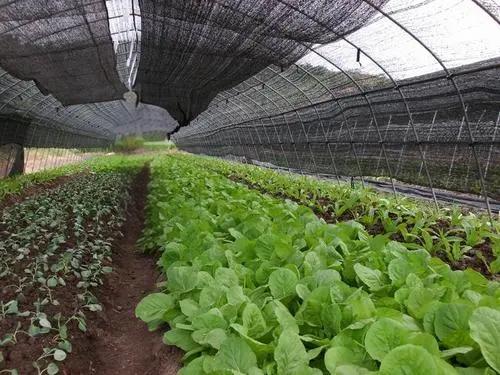Using Shade Cloth in Your Vegetable Garden: A Comprehensive Guide for Optimal Growth
Gardening enthusiasts know the importance of protecting their plants from harsh weather conditions. Using shade cloth in your vegetable garden is a highly effective way to ensure your plants receive the optimal amount of sunlight while being protected from the damaging effects of excessive heat. This guide will walk you through everything you need to know about shade cloth, its benefits, and how to use it effectively in your garden.

What is Shade Cloth?
Shade cloth is a specially designed fabric used in gardening to provide shade and protect plants from intense sunlight. It comes in various types, each offering different levels of shading and made from materials like polyethylene or knitted fabrics. The primary function of shade cloth is to filter sunlight, reducing the amount of direct light and heat reaching the plants.
Benefits of Using Shade Cloth in Vegetable Gardens Protection from Excessive Sunlight:
One of the main benefits of using shade cloth is to protect plants from scorching sun rays that can cause sunburn and wilting.
Temperature Regulation: Shade cloth helps in maintaining a cooler temperature in the garden, creating a more favorable environment for plant growth.
Enhanced Plant Growth and Health: By controlling the amount of sunlight, shade cloth promotes healthier and more vigorous plant growth.
Prevention of Pests and Diseases: Some shade cloths can act as a barrier against pests, reducing the likelihood of infestations and diseases.
Choosing the Right Shade Cloth for Your Garden
When selecting shade cloth, consider factors such as the percentage of shade it provides, the material, and the color. The shade percentage indicates how much sunlight the cloth can block. For example, a 30-50% shade cloth is ideal for most vegetables, while a 50-60% shade cloth is better for delicate plants like lettuce and spinach. Additionally, darker colors absorb more heat, while lighter colors reflect it.
How to Install Shade Cloth in Your Vegetable Garden
Installing shade cloth can be straightforward if you follow these steps:
- Measure the area to determine the size of the shade cloth needed.
- Choose the appropriate support structure, such as poles or frames.
- Secure the cloth tightly to prevent it from flapping in the wind.
- Ensure the cloth is positioned at the correct height to provide adequate shade without obstructing air circulation.
- Tips for Effective Installation:
- Use clips or ties to secure the shade cloth.
- Regularly check for wear and tear to ensure it remains effective.
Maintenance and Care of Shade Cloth
To extend the lifespan of your shade cloth, it’s essential to maintain it properly:
- Cleaning: Gently wash the shade cloth with water to remove dirt and debris.
- Storing: When not in use, store the cloth in a dry, cool place to prevent damage.
- Troubleshooting Common Issues: Address any tears or damage promptly to ensure the cloth remains effective.
Conclusion
Using shade cloth in your vegetable garden offers numerous benefits, from protecting plants from excessive sunlight to promoting healthier growth. By choosing the right shade cloth and installing it correctly, you can create an optimal environment for your vegetables to thrive.

